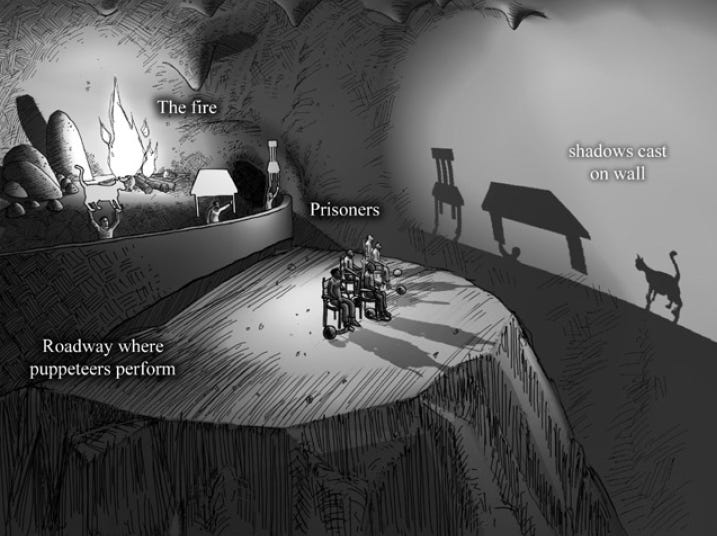It’s all narrative now
Why the stories we believe shape politics, decisions, and our communities
“Whether in business or politics, winning comes down to who can tell the best story. The narrative is what matters.”
(Detour: This isn’t the post I originally planned to write. That one was about information asymmetry—a concept often discussed in business but rarely in politics. Information asymmetry occurs when one party possesses better information than another. In my view, it’s an unavoidable, if uncomfortable, part of local politics, and it’s only becoming more prevalent. I’ll return to this topic in greater detail in 2025.)
Over the last few weeks, as I’ve reflected on the presidential election, I keep returning to a phrase I often share with clients, neighbors, and friends:
“The brand with the winning narrative wins.”
This simple idea applies as much to national campaigns as it does to the decisions we make in our own backyards. Yet I worry that our growing obsession with divisive national narratives is leaving little room for the stories that matter most—the ones about our shared local concerns and common goals.

What is a narrative, and why does it matter?
Many people confuse narrative with storytelling. While storytelling is a part of it, a narrative is more than that. It’s a framework—a kind of scaffolding—that helps us organize ideas, facts, and events into something meaningful. Narratives are how we make sense of the world, shaping both our understanding and our emotions and actions.
Those last two words—emotions and actions—are critical. A narrative doesn’t have to be factual to feel true. If it arouses emotion, it can spur action—regardless of whether it aligns with objective facts.
In this post, I’ll focus on the narratives we tell ourselves—the stories we construct to explain the world around us and justify our choices.
Here are three simple examples:
Personal: I’m craving a smash burger, and only a Shake Shack burger will do. Is it objectively the best? Probably not. But I’ve convinced myself that nothing else will satisfy me.
Professional: I need a cloud storage solution for my business. Dropbox is the only option because it’s familiar, comfortable, and has always worked for me.
Political: My party’s candidate is the only viable choice because I believe my party is on the “right side” of most issues.
Narratives are the stories we use to make sense of our decisions. Truth, objectivity, and facts often play a secondary role.
Philosopher Quassim Cassam, writing in The American Statesman, put it this way:
“A narrative is not just a story with a beginning, middle, and end. It is a story that tries to make sense of events in the world. Narratives are not primarily vehicles for conveying information. What they offer are explanations.”
In politics, this means narratives do more than explain policies—they define the purpose of those policies, helping voters connect the dots between what a leader says they’ll do and why it matters to them.
The 2024 election: narrative in action
The recent presidential election was a powerful demonstration of narrative’s influence. Former President Trump’s message—and the story his supporters constructed about his leadership—resonated deeply, even among those uneasy with his rhetoric or actions. Trump’s narrative eclipsed the one offered by his opponent, Vice President Kamala Harris.
Here’s what I didn’t hear from voters:
“I’m confident Kamala Harris will tackle the economy, crime, and the border crisis.”
What I did hear—often and passionately—were beliefs about Trump’s leadership:
• “Trump will get the border under control.”
• “He’ll bring back American jobs.”
• “He’ll take back our cities from violent criminals.”
• “Trump will get us out of these foreign wars.”
• “He’ll earn back the respect of foreign leaders.”
For these voters, the narrative of a better future under Trump’s leadership outweighed concerns about January 6th, authoritarianism, or retribution for his enemies.
As Jonah Goldberg of The Dispatch noted:
“The narrative is more important than the facts. … Facts are no longer in the driver’s seat. Narratives are.”
What this means for local politics
While narratives drive national politics, they are even more critical—and often more overlooked—at the local level.
As a city councilman, I see firsthand how national political narratives can seep into local discussions. They turn neighbors into adversaries and distract us from issues that impact our daily lives—like streets that need repair, schools that need funding, or neighborhoods that need safer parks.
These aren’t partisan issues. They’re shared challenges—and opportunities—for collaboration and progress. Yet, the polarization of national politics threatens to fracture local decision-making. When we divide ourselves along party lines over zoning laws or infrastructure projects, we lose sight of the bigger story: the shared progress we could achieve if we worked together.
We also risk being blinded by our own narratives—stories we tell ourselves about who “our” candidates are and what they’ll do—that prevent us from holding leaders accountable or facing inconvenient truths.
The consequences of narrative blindness
When we let narratives replace facts, we give bad actors space to operate. Leaders who promise solutions without real plans—or who prioritize their own agendas over the public good—thrive when voters refuse to question the stories they’ve been told.
Local residents need to be aware of this dynamic. We must balance the narratives we believe with a willingness to face facts, even when they’re uncomfortable. If we don’t, the consequences can be significant: poor governance, missed opportunities, and communities that grow increasingly divided.
The takeaway
Narratives shape how we see the world and the decisions we make—personally, professionally, and politically. At the local level, we have a responsibility to scrutinize the stories we tell ourselves and those presented to us.
If we allow national polarization or unchecked narratives to dominate local conversations, we’ll lose sight of the shared progress we all seek. But if we focus on facts, accountability, and common goals, we can craft a better story—one where our communities are stronger, our leaders are accountable, and our shared challenges become opportunities for collaboration.
Let’s choose that narrative.



